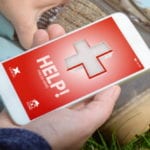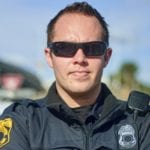 Music
Music  Music
Music  History
History 10 Less Than Jolly Events That Occurred on December 25
 Weird Stuff
Weird Stuff 10 Funny Ways That Researchers Overthink Christmas
 Politics
Politics 10 Political Scandals That Sent Crowds Into the Streets
 Weird Stuff
Weird Stuff Ten Bizarre Facts About The Doge Meme
 Our World
Our World 10 Ways Your Christmas Tree Is More Lit Than You Think
 Movies and TV
Movies and TV The 10 Coolest Stars to Set Sail on The Love Boat
 History
History 10 Things You Didn’t Know About the American National Anthem
 Technology
Technology Top 10 Everyday Tech Buzzwords That Hide a Darker Past
 Humans
Humans 10 Everyday Human Behaviors That Are Actually Survival Instincts
 Music
Music 10 Surprising Origin Stories of Your Favorite Holiday Songs
 History
History 10 Less Than Jolly Events That Occurred on December 25
 Weird Stuff
Weird Stuff 10 Funny Ways That Researchers Overthink Christmas
Who's Behind Listverse?

Jamie Frater
Head Editor
Jamie founded Listverse due to an insatiable desire to share fascinating, obscure, and bizarre facts. He has been a guest speaker on numerous national radio and television stations and is a five time published author.
More About Us Politics
Politics 10 Political Scandals That Sent Crowds Into the Streets
 Weird Stuff
Weird Stuff Ten Bizarre Facts About The Doge Meme
 Our World
Our World 10 Ways Your Christmas Tree Is More Lit Than You Think
 Movies and TV
Movies and TV The 10 Coolest Stars to Set Sail on The Love Boat
 History
History 10 Things You Didn’t Know About the American National Anthem
 Technology
Technology Top 10 Everyday Tech Buzzwords That Hide a Darker Past
 Humans
Humans 10 Everyday Human Behaviors That Are Actually Survival Instincts
10 Ordinary Real-Life Heroes Who Saved Lives
Modern society worships superheroes in literature, television, and blockbuster movies. We get a kick out of seeing good triumph over evil. We relish the idea of a savior protecting the innocent. But the moral frameworks of these characters are as fictional as the superpowers they are imbued with.
Sometimes we forget, however, that true heroes walk among us. They may not wear capes or shoot webs from their wrists, but their feats are far more impressive. The danger they experience is genuine, the stakes far higher. They go beyond the call of duty, often risking their own lives to help others.
While the 24-hour news cycle can sometimes make the world seem like a dark and cruel place, there is plenty of good to be found. With that in mind, we take a look at just ten extraordinary real-life heroes.
10 The Hero Of The Montecito Mudslides

In January 2018, Southern California was struck by a series of deadly mudslides. The storm-related disaster claimed the lives of nearly two dozen people and hospitalized 163 others. A mudflow in Montecito was so powerful that it dislodged a number of houses from their foundations. Reaching speeds of up to 32 kilometers per hour (20 mph), the debris-filled wave laid waste to vehicles, trees, power lines, and buildings.
Since heavy rain had been forecast, rescue teams were already mobilized along the coastal town when the storm hit. Fortunately, firefighter Maeve Juarez was on hand to coordinate the rescue efforts.
Maeve was inspecting the San Ysidro Creek Bridge in the early hours of the morning. Moments after leaving, an enormous gas explosion completely destroyed the bridge and set fire to neighboring houses. She rushed back to the scene, just in time to see one couple jumping from the second floor of their burning home. The woman had broken her feet during the escape. Maeve clothed the half-naked woman and carried her over 400 meters (1,300 ft) to safety.[1]
Maeve continued working through the night with her colleagues and is credited with saving over 100 lives. She was presented with the first Medal of Valor award in the history of the Montecito Fire Department, along with her colleague Andy Rupp.
9 The Man With The Golden Arm
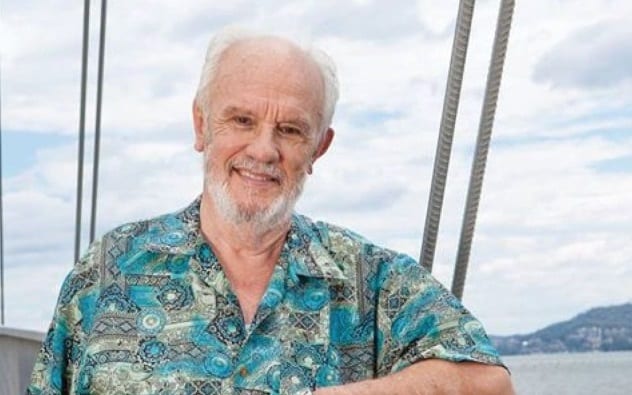
James Harrison’s entire outlook on life changed at a very young age. At the tender age of 14, the Australian underwent a surgical procedure that required a series of blood transfusions. Seeing as his life was saved by the kindness of others, Harrison decided to “pay it forward.” Four years later, in 1954, he started giving blood. Even his own fear of needles could not deter him.
Doctors soon discovered that James had a very rare type of antibody—the anti-D antibody—in his blood plasma.
Researchers established that the anti-D antibody could be administered to combat a condition called rhesus disease. In rhesus disease, a pregnant woman’s immune system recognizes certain markers on her baby’s blood cells as foreign. The mother’s immune system then starts churning out antibodies that target and destroy her baby’s red blood cells. This unwanted process can cause serious complications during pregnancy, potentially resulting in the baby’s death. But James’s blood plasma was used to devise a treatment that could stop the mother’s immune system from becoming primed in this way.
James was the very first donor of what would become Australia’s Anti-D Program. James (aka “the man with the golden arm”) has donated blood plasma a staggering 1,173 times. He gave blood every two weeks for 60 years.
The Australian Red Cross estimates that the 81-year-old’s donations have helped save over two million babies. “Every ampule of Anti-D ever made in Australia has James in it,” explained Rhesus Program Coordinator Robyn Barlow.[2] It is no wonder, then, that he was awarded the Medal of the Order of Australia for his noble deeds.
8 Tragedy On The Water
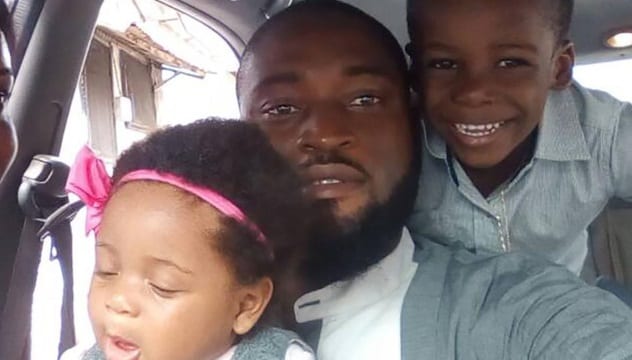
In August 2018, a passenger boat carrying 24 people slammed into an object in the waterways of Rivers State, Nigeria. The boat capsized, throwing its occupants overboard. Without hesitation, Joseph Blankson dove into the waters. As soon as the 36-year-old had rescued one person, he would go back to save another. One by one, Blankson pulled 13 people to safety.[3] Sadly, while attempting to rescue a 14th soul, he succumbed to fatigue and drowned. Joseph’s incredible sacrifice meant that he was the only fatality that day.
Blankson leaves behind his wife and three children. Mercy Blankson described her husband as a loving father who, “put people first, before himself.” The president of the Nigerian Senate, Bukola Saraki, offered the following words:
Every now and then we hear amazing stories of Nigerian heroes. Joseph Blankson gave his life to save 13 people. I salute this Nigerian hero who by his last great act, showed us, once again, that we have remarkable people across this nation. His memory will be writ in gold.
The Rivers State government has organized an endowment fund to provide for Joseph’s grieving family.
7 Arnaud Beltrame
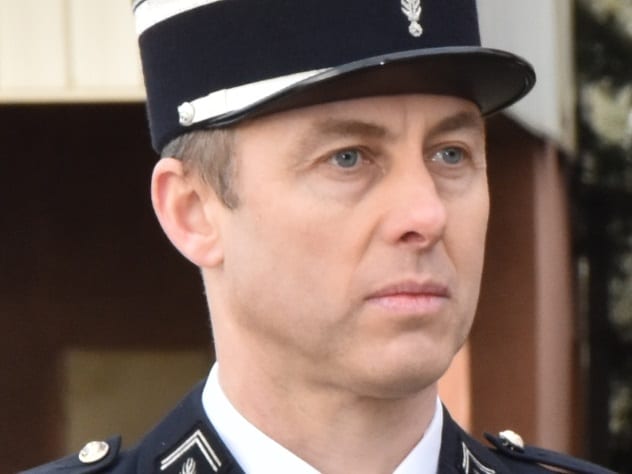
In March 2018, an ISIS gunman went on a rampage across the French town of Carcassonne, shooting at off-duty police officers. The attacker then drove to the commune of Trebes and stormed the local Super U market.[4] The attack had suddenly turned into a hostage situation.
A brave police officer, Lieutenant Colonel Arnaud Beltrame, did not hesitate to take the place of one of the frightened hostages. Beltrame entered the building and secretly placed an active cell phone on a nearby table. This act gave his colleagues an opportunity to listen in.
Lieutenant Colonel Beltrame spent over two hours in the presence of his Moroccan captor. Upon hearing the sound of gunfire, French officers went into the supermarket and killed the terrorist. Three people were killed during the rampage, while 15 others were hurt.
A badly wounded Beltrame was transported to a hospital. Knowing his injuries were life-threatening, Arnaud married his partner from his hospital bed. Mere hours later, Arnaud died from his injuries.
A state funeral was held to honor Beltrame’s sacrifice. His mother said she was not surprised to learn of her son’s heroism:
He’s always been like this. He would tell me, “I am doing my job, Mom, that’s all.”
6 The Angel of Nanjing
Over a stretch of the Yangtze River lies the Nanjing River Bridge. This colossal road-rail bridge took eight years to build and was completed in 1968. It boasts a four-lane highway, a 6,772-meter-long (22,218 ft) railway track, a viewing tower, and a series of piers.
While a remarkable feat of Chinese engineering, the structure has turned into a major suicide hot spot. Around 2,000 people have used the Nanjing River Bridge to take their own lives between 1968 and 2006.
In 2003, a vegetable seller named Chen Si started his daily walk along the bridge. Much to Chen’s shock, he saw a man readying himself to jump. Chen Si acted quickly and dragged the man back across the steel railing. From that day forth, he made it his life’s mission to save others.
Every weekend, Chen Si uses his free time to patrol the bridge. Riding along on his motorbike, the Nanjing resident keeps a lookout for the telltale signs of depression. “Their way of walking is very passive with no spirit, or no direction. I’ll go and talk to them,” explained Chen.[5] He even hands out suicide prevention pamphlets that list his own cell phone number as an emergency contact.
Watching over the bridge for more than a decade, Chen Si has now saved hundreds of lives. An award-winning documentary, Angel of Nanjing, provides the audience with just a glimpse of Chen’s selfless work.
5 The Human Shields
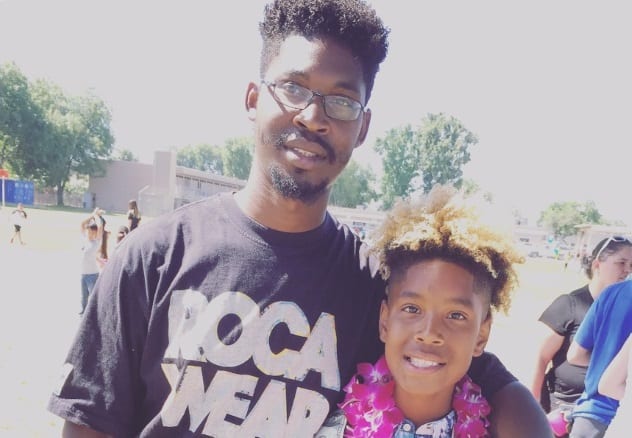
In 2017, a shooter attacked innocent men, women, and children at a Las Vegas music festival. The attack was the deadliest mass shooting in the history of the United States, leading to 58 deaths and hundreds of injuries.
From the horror emerged stories of great courage. One of the night’s survivors, Jonathan Smith, went to considerable lengths to help fellow concertgoers. The 30-year-old ushered dozens of people to safety, putting himself in the line of fire. Smith was eventually struck in the arm and neck. “It was like a heavy punch to my arm. At that point my whole body spun around. I hit the gravel,” explained Smith.[6]
Smith was himself saved by an off-duty cop. San Diego police officer Tom McGrath rushed to Smith’s aid and stemmed the bleeding. “He’s somebody who inspires me,” said Officer McGrath. “I know he might not want to give himself all the credit, but he definitely did a wonderful job, and I was just happy to be there to help him towards the end, and get him out of there when he was hit.”
A GoFundMe page was set up to cover Smith’s medical bills. The campaign raised over $80,000.
In quite an extraordinary display, ordinary people throughout the Strip set to work helping each other. Lindsay Lee Padgett used her truck to ferry the wounded to the hospital. Carly Krygier used her own body as a human shield to protect her young daughter. And US Army veteran Rob Ledbetter tended to the injured.
4 Predicting A Tsunami
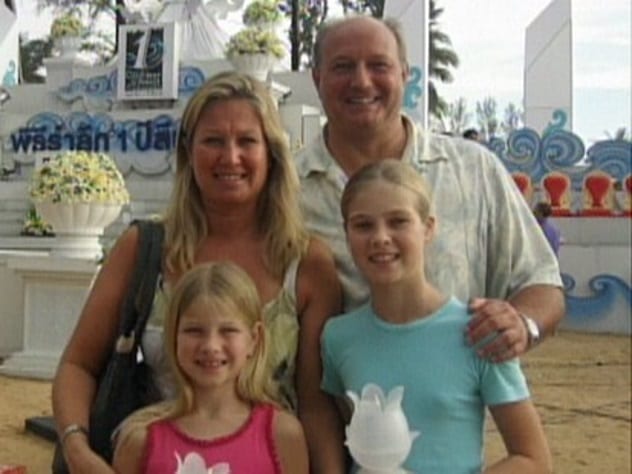
In 2004, 10-year-old Tilly Smith was vacationing on a beach in Phuket, Thailand, when she made a lifesaving discovery. According to Tilly, the sea was bubbling “like on the top of beer.” To many, this may seem like a trivial description. But Tilly knew that something much greater was at play.
Weeks before, Tilly was learning about tsunamis in one of her geography classes. An educational video showed some of the early warning signs: frothing water and a suddenly receding tide.
Tilly pleaded with her family to abandon the beach. Her father, Colin Smith, trekked back to the hotel to warn the staff. But the Surrey girl had a much harder time convincing her mother, Penny, of the impending danger.
“I said ‘There’s definitely gonna be a tsunami,’ and my mum didn’t believe me. She didn’t react,” recalled the British youngster. “And then I said, ‘Right, mum, I’m going. I’m definitely going. There is definitely going to be a tsunami.’ And she just [said] ‘Bye, then.’ ”[7]
Tilly’s father alerted an on-duty security guard, and the authorities quickly evacuated the beach. The Smith family sought refuge at their hotel, just minutes before the tsunami hit.
The tsunami was triggered by an earthquake just off the coast of the island of Sumatra, Indonesia. An ensuing barrage of tsunamis devastated vast areas of Southeast Asia and killed nearly 230,000 people.
Tilly’s persistence saved the lives of every person on the beach that day. She was awarded the Thomas Gray Special Award from the Marine Society.
3 Hookers For Jesus
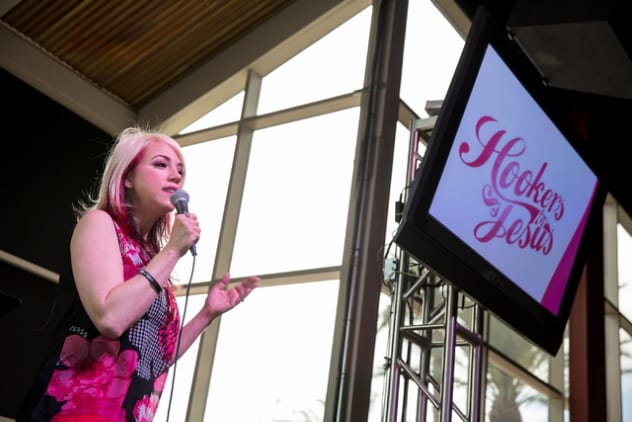
Annie Lobert has not had an easy life. During her teen years, she started out working as an escort and exotic dancer. In a bid to make even more money, Lobert moved to Sin City with her boyfriend. Then everything changed.
After she returned home from a job, Lobert’s boyfriend demanded all of her money. “I told him, ‘No,’ so he took me into the backyard and [beat me].”[8]
Lobert’s boyfriend took away her ID and cell phone. She quickly found herself trapped in the sex-trafficking industry and ended up taking drugs. After five grueling years of abuse, Lobert escaped her pimp boyfriend.
In 2003, Lobert was taken to a hospital after a cocaine overdose. The incident forced Lobert to take stock of her life. She vowed to use her belief in God to help other sex workers find a new path.
Lobert, now 51, went on to establish the nonprofit “Hookers for Jesus.” Former working girls and sex trafficking victims are given counseling, emergency supplies, and a place to stay. Lobert’s Christian ministry also aims to protect the women from their former pimps. “Our house in Henderson, we had pimps show up with guns,” said Lobert.
Sex trafficking in the United States is a multimillion-dollar enterprise. The International Labor Organization estimates that 4.5 million people are trapped in forced sexual exploitation worldwide.
2 The Poisoned Village
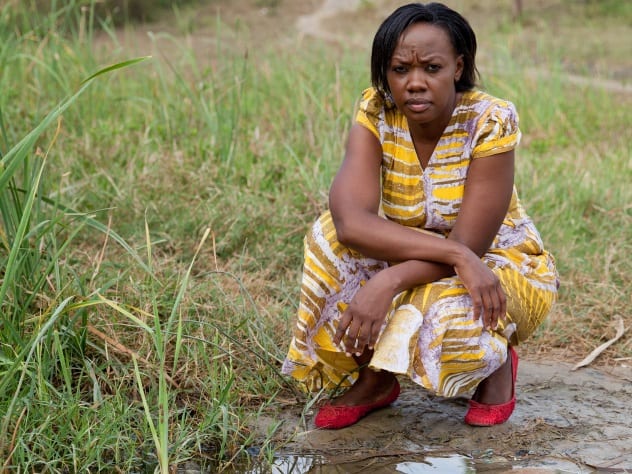
When Phyllis Omido started working at an iron-smelting factory in Kenya, little did she know that her own health was at risk.
The African nation’s booming solar panel industry has created considerable demand for lead. The EPZ refinery, where Omido worked, used to extract lead from old car batteries.[9] Operating as the plant’s community relations manager, Omido was tasked with producing an environmental impact report. The news was dire. The plant’s chemicals posed a potential danger to those living nearby. Although Omido recommended the factory’s immediate relocation, her pleas were ignored. Instead, she was removed from the project.
Three months on, Omido’s son became ill. Doctors soon discovered the cause: elevated levels of lead within the boy’s bloodstream. Because Omido was breastfeeding at the time, it is believed the lead was passed on via her breast milk.
Phyllis quit her job and began investigating health concerns within Owino Uhuru—the slum where the EPZ refinery was based. Through Phyllis’s efforts, it was discovered that many residents had suffered miscarriages and respiratory disease. Mounting pressure forced the closure of over a dozen smelting factories across Kenya.
In 2015, Omido was the recipient of the Goldman Environmental Prize. The young mother has now brought a class-action lawsuit against the Kenyan government. Meanwhile, the senate health committee has agreed to organize relief efforts in Owino Uhuru.
Omido’s campaign has not been without incident. In 2012, gunmen launched an attack on her home. She lives in constant fear of being abducted by vigilantes and must carry a panic button.
1 Rick Rescorla
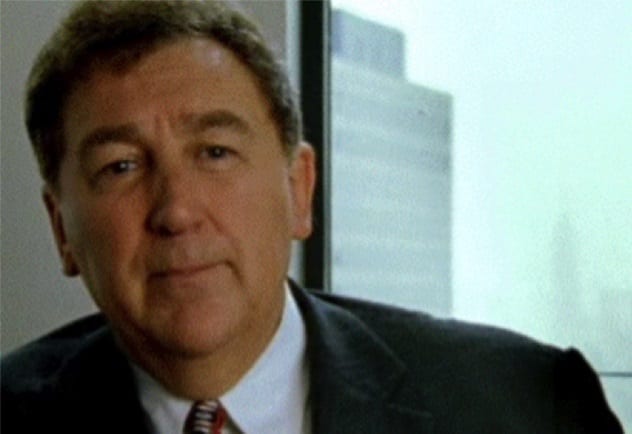
September 11, 2001, was the day that countless heroes made themselves known to the world. Step forward, Rick Rescorla.
Ever since the first World Trade Center attack back in 1993, Rescorla was convinced of the need for better evacuation plans. The security expert argued that the World Trade Center, owing to its economic importance and symbolism, would remain a target of Islamist terrorism. He even predicted that the next potential terrorist attack could involve a cargo plane, loaded with bombs or chemical and biological weapons.[10]
Rescorla worked for Morgan Stanley Dean Witter. The company occupied 22 floors of the South Tower. The military man warned his bosses of the possibility of more terrorist attacks and recommended the company move its offices to a different location. But the company still had a lease for the building that would remain in effect until 2006. Rick Rescorla understood the danger, though. So he devised detailed evacuation plans for the tower. He also made sure that mandatory drills were carried out twice a year, despite resistance from management.
When the first plane hit, Rick issued an evacuation order. The workers knew exactly what to do. As thick, black smoke billowed from the North Tower, Rick led thousands of men and women to their safety.
While the evacuation was still in its infancy, Rick phoned his longtime friend, Dan Hill. Rescorla told Hill that the Port Authority had ordered the building’s occupants to remain where they were. Hill recalls what his friend told the Port Authority:
Everything above where that plane hit is going to collapse, and it’s going to take the whole building with it. I’m getting my people the f—k out of here.
That decision likely saved thousands of lives.
Rescorla was born in Cornwall, England. He served as a police officer and fought for the British Army. A staunch anti-communist, Rescorla moved to the United States to fight in the Vietnam War. Rick would go on to achieve many things. He was a writer, teacher, security expert, war veteran, and cancer survivor.
Rescorla was last seen going back into the South Tower to look for remaining workers. His body was never found.
Read about more amazing feats of heroism on 10 Selfless Heroes Who Made The World A Happier Place and 10 Awe-Inspiring Unsung Heroes Of Devastating Attacks.



